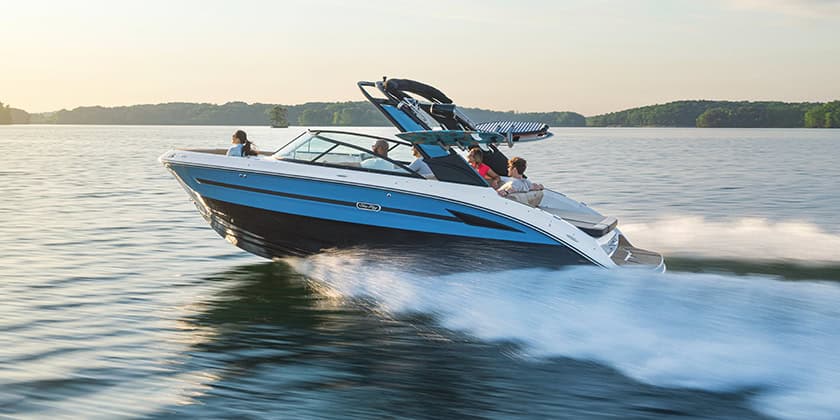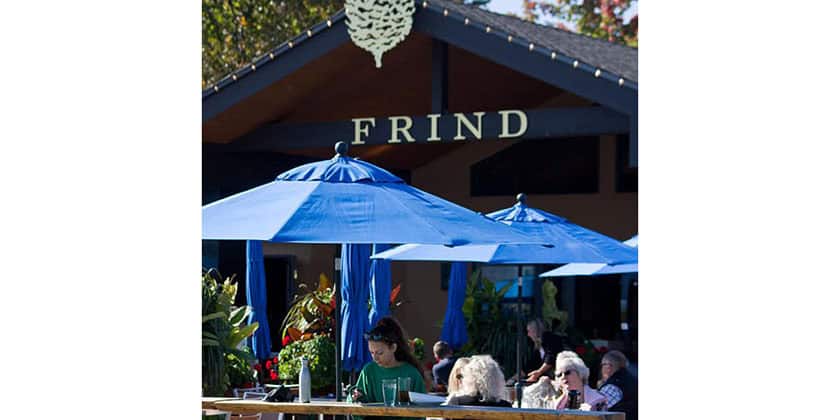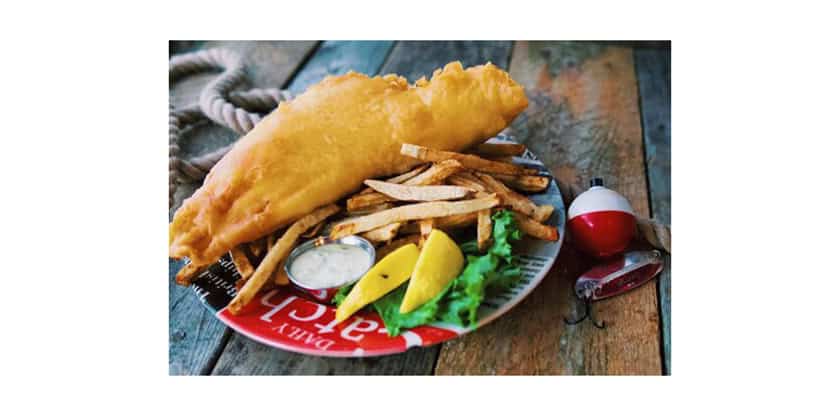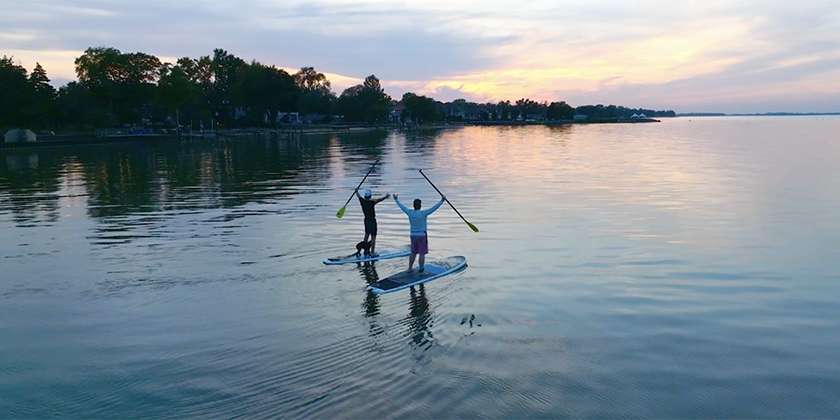Hughes 31
By Pat Sturgeon
I can clearly remember my first encounter with the Hughes 31. It was 1979 and I was helping my brother choose a hull/deck kit boat project. A kit boat is a boat that you can purchase at any stage of construction from the hull and deck on. Back then, only a few builders offered their boats in kit form. Manufacturers like Ontario Yachts, Grampian, Hughes and Alcona would go to the boat shows offering completed boats for people who had the money, and kit boats to those who wanted to sail but couldn’t afford a second mortgage.
Unfortunately, building a sailboat is not as easy as most people think. Many ambitious buyers soon discovered this, and, as a result, most of the completed kit boats turned out pretty rough – a fact reflected in the low resale values kit boat owners swallowed when they cashed out. But regardless of the final state of the product, kit builders enjoyed a reward that other sailors couldn’t buy: the huge sense of accomplishment of having built their very own boat.
A long, complicated story
Hughes boat works was founded in 1966 by Peter and Howard Hughes. The two men began building sailboats at an abandoned air force base in Centralia, Ont., and the company flourished until it was bought out by US Steel. Shortly after the purchase, the new owners approached yacht designers Sparkman and Stevens and asked them to design a series of performance cruisers that they called Northstar. This line consisted of the Northstar 500, 1000, 1500 and 80/21. Sadly, the new line was not fated to remain in production very long. In 1977, US Steel went into receivership. The receiver at the time contacted Peter and Howard Hughes and offered them the assets of the company. The Hugheses, in turn, approached the government and acquired a loan for restarting production of the boat line. Sparkman and Stevens cried foul when they learned of this development, as they could no longer lay claim to royalties on their designs since the builder went bankrupt. Despite the conflict the Northstar 1000 was given a complete face-lift and resurfaced in 1979 as the Hughes 31. The biggest modification was the raised coach house, which turned the boat into a more comfortable cruiser. The skeg was extended on the rudder from partial to full. OMC had also just introduced a unique sailboat engine called a Saildrive.
Hughes produced upwards of 250 Hughes 31s in either kit form or factory complete until 1982, when the company went into receivership. That was supposedly the end of the Hughes 31, though the odd kit boat may have been produced in the mid-’80s when Howard Hughes reacquired the company from Aura Yachts.
Hughes Columbia Yachts was the official name of the company in 1979, the year I started doing service and commissioning for the Port Credit dealers, Ivan Tait and his wife Kathie, who were responsible for 90 per cent of the local sales for Hughes. After the standard layout had been in production for a year, Ivan decided to build a boat for himself; with Kathie’s interior design skills and Ivan’s handyman background, their Hughes 31 took on a more polished yacht look. A chart table, high-quality fabrics and accessories such as curtains made all of the difference, and out of the Tait’s innovation the SE version of the Hughes 31 was born.
The interior of the standard Hughes 31 was typical of its era. The forward cabin had a long V-Berth that was very narrow at the end but flared out quickly. It is about 6.5 feet long and comfortable for two average size adults. The V-berth has limited storage, but as you move aft there is a large hanging locker and a series of pull-out drawers that provide ample storage for clothing. Across from the locker is a good-sized head. Most Hughes 31s came with hot and cold pressure water, as well as a hand -held shower for the head compartment. The head compartment, however, is primarily made of teak, so showering would require a meticulous cleanup afterwards to avoid the growth of mould and bad odours. The shower water drains directly into the bilge, but I strongly suggest that all owners connect it to the sink drain and install a macerator pump.
I always describe the Hughes 31 as a boat that gives “good bang for the buck” and the main saloon plays a big part in this evaluation. The table is all teak and folds up on the port bulkhead. This makes the main area of the boat very roomy. The cushions are made with four-inch-thick foam and the settees are quite comfortable. The location and layout of the galley make it appear to be an extension of the main cabin
and the quarter berth – another feature that makes the Hughes 31 feel very spacious. If you have guests on board, the port-side settee can be turned into a double bed, bringing the total number of available sleeping spaces to six. This is why I often recommend the Hughes 31 to families of five that want to go cruising without spending more than $30,000. The SE version is slightly different than the regular layout. Tait’s chart table was designed to go at the end of the quarter berth. This addition works well because it provides a navigation station for chart work and electronics without sacrificing the additional sleeping space in
the quarter berth.
Power struggles
The Hughes 31 regular layout generally had an OMC Saildrive. Once the SE version was available almost everyone wanted one, but by that time the word of problems experienced by owners with the Saildrive engine were starting to circulate, and most SE buyers opted for the Yanmar 2GM diesel instead. The Yanmar did take up more space, however, so the steps leading down into the cabin had to be lengthened.
Despite the dock talk, the OMC Saildrive turned out to be a better engine than people thought. The early problems were threefold: the neoprene gasket between the engine and drive unit did not like gasoline and deteriorated prematurely, the engine tended to foul spark plugs and the magneto ignition had a relatively low charging capacity. However, once these three main problems were dealt with, Saildrive owners generally had a very quiet and powerful auxiliary engine.
While OMC struggled to correct the problems with the Saildrive, the Yanmar diesel took off as the primary small diesel auxiliary for sailboats in the 30-foot range. Almost every sailboat manufacturer at that time used a Yanmar diesel in at least one, if not all, of their models.
Simple and sturdy
Hughes boats were not the Cadillacs of their time, but they offered good value for coastal and inland cruisers. Their construction was in accordance with Lloyd’s of London specs, but, there are a few areas of concern. This first is the deck-stepped mast, which is supported by a compression post of 2×2 solid teak inside the head compartment. The post was fitted between the hull and deck liner and was not completely supported at its ends. As a result, the mast tended to compress the deck, causing a dip at the mast step. As time went on, the boat would oil-can at this point and you ended up with delamination and core breakdown around the mast step. Other than that, most of the construction is quite solid, the cabinetry is professional and the bulkhead placement is typical of most other manufacturers at that time. I would prefer to see the main bulkhead bonded to the hull and deck all the way around, but this type of construction is costly and usually only done by custom shops or race boat builders.
The deck has a large one-piece liner inside and it makes for a very bright interior. The hull-deck joint, which was through-bolted with a toe rail all the way around, is notorious for leaking. In fact, the factory would provide a tube of household silicone with each boat, along with a disclaimer in the warranty against leaks.
The rigging is substantial, but the mast is questionable. Hughes used a Cinkel spar made by Alcan Aluminum at the time. It was an Isomat (French spar manufacturer) copy, but it did not compare in quality. The boom has internal lines and a built-in four-to-one purchase for the outhaul. Beware of the original gooseneck fitting though, because it is made of cast aluminum and can break easily if it is strained in the wrong direction.
The Hughes 31 has a deep-chested forefoot, a fin keel and a skeg rudder that is very deep. This makes the boat track beautifully upwind. The long bow and curved sheer keep the cockpit quite dry by throwing the water out instead of back. l only wish that the boat had some inboard genoa tracks and a narrower rig to get better sheeting angles for the genoa -with these additions I think that the boat would point and behave even better. The boat is very stiff and performs well when it is windy. Downwind, the Hughes 31 behaves typically for a narrow transom design and the helm will need much attention.
The cockpit of the Hughes is a traditional ocean-going size and shape which mean s it is narrow and long. The cockpit coamings are quite high, providing good back support and protection from spray. The side decks are easy to get around and going forward to the small foredeck area is painless. The Hughes 31 has a built-in anchor locker, that is large enough to hold two anchors and a small bow roller. The halyards are all lead aft to coach house winches and it is an easy boat to get underway from the cockpit.
Having sold and worked on boats for 20 years, I constantly find myself having to convince people that the Hughes line of boats is not bad. I can assure you though, the company has a bad rep but the product is sound.
We can not ignore the impact Hughes has had on the Canadian boatbuilding market. Hughes was the second-largest Canadian boat manufacturer in 1981, second only to C&C. There are Hughes boats all over the world, and in most marinas and yacht clubs in Canada. The designs are all from reputable designers, the construction is sound, and most of all, the value is outstanding. You can have your pick of the bunch for under $28,000 (1999 pricing).
Originally published in Canadian Yachting Sailpast 1999 issue.
No specifications listed in article.






















